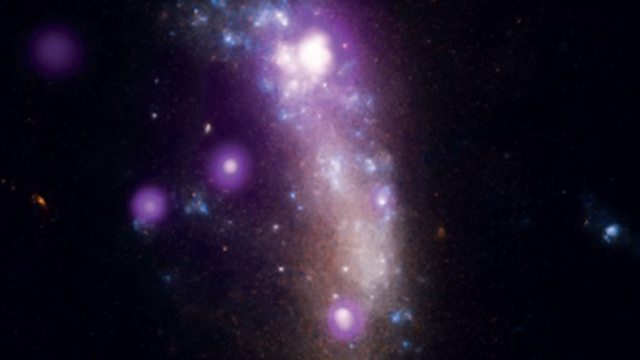Cosmic Dust
Cosmic Dust; Human Brain Project; Sociable Birds; Virtual Water
A new study sheds light onto where dust grains that occur in the wake of an exploding star come from. Rocky planets like our earth are big clumps of cosmic dust – the small particles we see in space and galaxies. This dust can eventually form planets but the origins of the dust remain mysterious. Scientists are now trying to understand how these particles of dust get bigger and turn into rocky planets.
Human Brain Project
Senior neuroscientists have attacked the Human Brain Project, a billion-pound European Commission initiative aiming to simulate the human brain. The Human Brain Project aims to compile what we know about brain cells and networks and use a new generation of supercomputers to model how the brain functions. In an open letter, several hundred scientists say the project is "not on course" and are calling for more transparency.
Sociable Birds
Sociable weavers are unique birds common in Asia and Africa and they co-operate in groups, forming the biggest nests ever seen for any bird. They can be up to several metres in length and can weigh over a tonne, lasting for many years. Now a new study has found that these birds behave in a complex anthropomorphic behaviour, where even distantly-related birds share one big thatch. Dr René van Dijk, from the University of Sheffield, explains just how far these birds go to co-operate as a society.
Virtual Water
In China, lots of water intensive products are produced in water scarce regions and now researchers are using something they term virtual to help track its movement as it is becoming a scarce resource in many parts of the world. Research published in the journal Environmental Science & Technology, shows that in China the richest provinces have a larger impact on areas with already tight supplies, through the importation of food, and other goods that used water to create them. Professor Klaus Hubacek from the University of Maryland explains why water resources are distributed unevenly and how virtual water can help.
Presenter: Jack Stewart. Producer: Ania Lichtarowicz and Melissa Hogenboom
(Image: The supernova SN 2010jl (large white spot near top) produced dust much larger than usually found in the Milky Way © X-ray: Nasa/CXC/RCA CA/P. Chandra et al)
Last on
More episodes
Previous
Chapters
-
Cosmic Dust
Dust formed when a star explodes may give insight into how new planets are made
Duration: 06:54
Human Brain Project
Senior neuroscientists sign an open letter against the Human Brain Project
Duration: 08:41
Sociable Birds
Sociable birds build and share big thatches of nests, up to several metres in length
Duration: 04:47
Virtual Water
How virtual water is used to track water-scarce parts of the world
Duration: 05:06
Broadcasts
- Thu 10 Jul 2014 18:32GMTÃÛÑ¿´«Ã½ World Service Online
- Fri 11 Jul 2014 01:32GMTÃÛÑ¿´«Ã½ World Service Online
- Fri 11 Jul 2014 08:32GMTÃÛÑ¿´«Ã½ World Service Online
- Mon 14 Jul 2014 03:32GMTÃÛÑ¿´«Ã½ World Service Online
Podcast
-
![]()
Science In Action
The ÃÛÑ¿´«Ã½ brings you all the week's science news.


